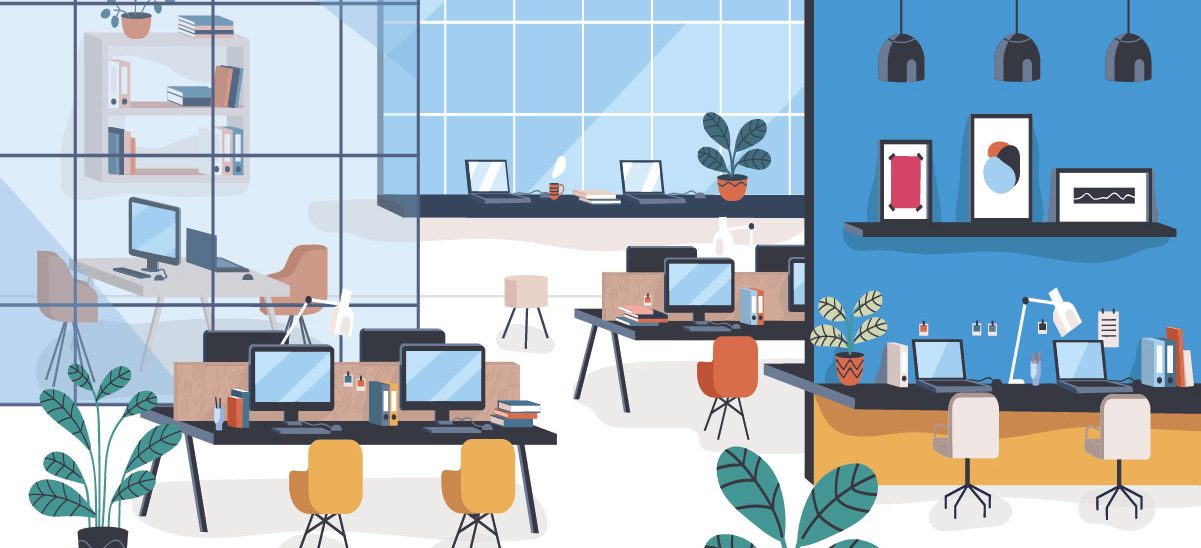How the pandemic has shifted the power balance in workspace demands

David Kinnaird, Chief Customer Officer at essensys, explores how the pandemic has shifted the power balance in workspace demands from the corporates to the employees.
The employer-employee power dynamic is ever-changing, driven by technology, legislation and social norms. A good example is a phenomenon known as BYOD or “Bring Your Own Device”, where tech-savvy employees preferred to use their own smarter, faster devices versus the barcoded and battered laptop offered by the corporate IT team. Ultimately, they got their way. I would argue that this power shift is now extending to the workplace too. The rapid transition to remote, home working driven by the pandemic has swept away historic corporate objections to this practice.
Employees no longer need to negotiate flexible working – it is now almost certainly a given. Individuals can now effectively choose the working environments and spaces that suit them best for productivity and their own work-life balance. We are no longer anchored to an office. We have become untethered from physical spaces, untethered from specific locations and, to a degree, from each other. Many people have adapted to working from home to the extent that they can’t imagine returning to the old ways of being present in an office Monday to Friday, 9-5.
And of course, this has knock-on effects. Businesses need to adapt their strategies and ways of working to implement successfully, and work within, a hybrid business model – one which enables employees to work productively in the office and at home while building and retaining a strong corporate ethos. And interestingly, productivity levels have reportedly remained largely the same during lockdown, further supporting the permanent transition to this hybrid model. Landlords of commercial space need to consider how they adapt to facilitate this changing business culture.
In many ways, we have mastered the tools that enable remote working – especially when the whole organisation has been remote. However, more challenges are to be addressed when we have half of an organisation in the office and half at home. Enabling collaboration in this mixed mode is not easy. Anyone who has shared an office with multiple co-workers on Zoom calls will attest to how disruptive this can be. Room based “collaborative suites” designed to enable team interaction are not yet perfect, but they are evolving rapidly. For once, human and societal behaviours are driving adaptation of technology in the workplace rather than the reverse.
So, what is the action for landlords and occupiers? Fit-out design will change: More hotdesking, more soundproofing, and more meeting rooms equipped with technology for remote interaction. Densely occupied environments where everyone is on HD Zoom will test Wi-Fi capacity and require more planning and an upgrade to the latest Wi-Fi 6 standards. One thing is for sure: occupiers and arguably even more so, their employees, will only come and work from space that exactly fits their productivity needs – otherwise, they might stay at home.
The importance of a connected office space
Homes have become more connected and feature-rich. The increasing adoption of Ring doorbells to assist with remote deliveries, fridges, heating systems and lights, all controlled and managed remotely or even by voice command, is becoming more commonplace. Homeworking during the pandemic will have reminded people of the comfort and convenience of their interconnected home environment, which may throw into sharp relief the relatively low-tech environment of their office.
The home is competing with the office in a way that we had never expected. If office systems, such as meeting room booking tools and door access, don’t talk to each other, or if tech cannot enable fast and reliable communications to those working remotely, people may choose to stay at home to work for convenience and productivity. The office experience needs to be friction-free, with everything working better than the domestic equivalent. Lighting, desks, printing, Wi-Fi, meeting spaces, the coffee – all better, more connected, and higher quality than at home.
Providing spaces to meet hybrid demands
With remote working set to stay, essensys fully expects to see the further decline in the take-up of long-term leases – in fact, you can argue they’re already a thing of the past. Instead, businesses will seek accommodation strategies that fit the needs of a workforce that demands flexibility and can balance both working remotely and sustained corporate occupation. And they want these spaces to be readily available and connected instantly.
However, such spaces will need to be adaptable and customisable. For argument’s sake, let’s say a business has 100 employees. The business owner may agree with the landlord that only 60 people need to be accommodated with facilities and desks daily. But, once a month, all staff will be together, and then 100 people will need to be accommodated. Landlords have to adapt to this – meaning that a second space has to be provided for in a different location. Ultimately, business strategies are evolving, and so too must building owners.
Multiple locations will require networks to be established so that staff can easily access different buildings with one code, or one security pass, for example. Minimising friction and being user-friendly is of huge importance to improve customer experience. Ease of travel and choosing what space to work from is being called for by companies occupying space now – even to the point where people want offices right next to bus or train stations. To enable this required ease of travel and choice, landlords will need to invest in technology that provides seamless connectivity between offices in different locations.
The importance of flexibility and experience
The long-term impacts of the pandemic are, of course, yet to be fully understood or felt, but we can say with certainty that we’ve witnessed the power shift– and traditional office working models are set to evolve.
To avoid having space on their hands, landlords must ensure they stay relevant by answering the market demands. This means providing spaces that are as flexible as possible and help business leaders manage hybrid workforces effectively. It also means providing services and amenities that occupiers have come to expect, such as room booking technology, physical and digital security measures, community engagement, flexible billing arrangements and office environments rich in value-added services.
READ MORE:
- How to successfully reopen your office in a post-Covid-19 world
- Founder Feature: Neil Purcell, founder and CEO, Talent Works
- Ensuring a secure digital transformation journey
- Build these five habits to reduce the risk of ransomware
Offering connected, flexible and seamless space experiences ensures ease of use and thus become an attractive prospect for people to work from rather than from home. And not only flexibility, but office spaces must also now provide a positive user experience too. Placing a significant emphasis on both are the priorities for the real estate sector to flourish through this power shift and avoid having space on their hands.
For more news from Top Business Tech, don’t forget to subscribe to our daily bulletin!
